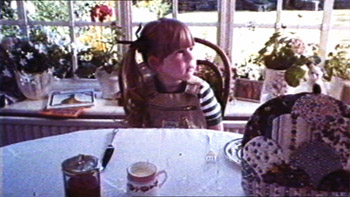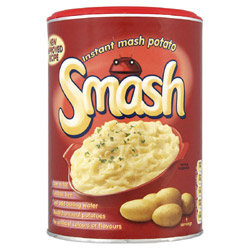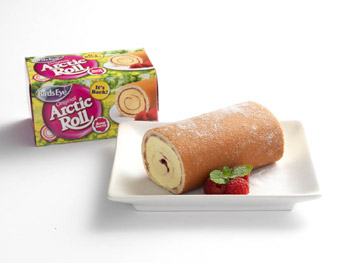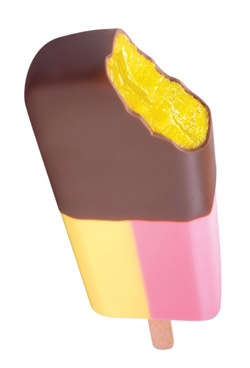Back to the past

Behold the power of nostalgia, the lure of ‘retro chic’ and the undeniable draw of the not too distant past. Marketers rub their hands with glee as we fall into their stylish vintage web, but we can’t seem to get enough
9 March 2009
 It’s been said that retro and recession go hand in hand. The slightest hint of a financial glitch has us reaching for the memorabilia of poorer yet happier times.
It’s been said that retro and recession go hand in hand. The slightest hint of a financial glitch has us reaching for the memorabilia of poorer yet happier times.
Maybe it’s that the mood these days doesn’t tend to put us in the humour for listening to Coldplay on our iPods, but for searching out our old Specials albums instead.
 Perhaps it’s the constant reminder of past recessionary days that is the reason hairstyles are starting to look a bit reminiscent of ‘Reeling in the Years’ and the national wardrobe seems to be heading back in time, favouring unflattering cuts that look even worse now on our post-boom bulges.
Perhaps it’s the constant reminder of past recessionary days that is the reason hairstyles are starting to look a bit reminiscent of ‘Reeling in the Years’ and the national wardrobe seems to be heading back in time, favouring unflattering cuts that look even worse now on our post-boom bulges.
Is it because those expensive trappings of affluence and modernity that seemed like a good idea before we went bust appear now to mock us? Or maybe it’s just the comfort factor of returning to younger more carefree times through nostalgic, ‘retro’ paraphernalia. Whatever the reason, retro branding, retro marketing, retro-ising seems to work even better when recession puts the boot in.
That said, where food and drink is concerned we seem to be willing to go back in time at any time. In fact, in recent years we’ve been bringing back retro brands to beat the band, be that Hot Chocolate or Spandau Ballet. And brands have been rooting around in their attics, digging out and dusting off marketing effects from yesteryear, sensing just how much we’d love a glimpse, like they were old photos from our own grannies’ wardrobes.
just how much we’d love a glimpse, like they were old photos from our own grannies’ wardrobes.
Nostalgia is a potent medicine for brands, most of all because it taps into something we want. The pay-off is in the entertainment value of nostalgia alone, before we even consider any creativity invoked to engage us. If we look at the return of Wispa, the proof is in the numbers. Some 40,000 signatories on Facebook, a Youtube campaign, and even some homemade ‘outdoor’ – if you can call it that – in the form of two festival goers interrupting Iggy Pop at Glastonbury to draw attention to their ‘Bring back Wispa’ banner. The work was done for Cadbury, all thanks to our great yen for a childhood treat.
Back by popular demand
Now some cynics may believe that Cadbury was  behind the whole thing, drumming up excitement on the web in advance of a carefully planned relaunch. It seems fairly clear to me though that this was a natural occurrence, with very little pushing required.
behind the whole thing, drumming up excitement on the web in advance of a carefully planned relaunch. It seems fairly clear to me though that this was a natural occurrence, with very little pushing required.
Petra Faulkner, senior brand leader at Cadbury Ireland, describes the impetus for their own campaign as the “huge swell” in numbers online taking an interest in Wispa. “While we would often get asked to bring back old products, it’s not usually at the high level that was associated with Wispa,” she explains, “We realised that this was potentially a great opportunity for Cadbury.” And with that kind of ready support, what brand wouldn’t take advantage? It’s simply answering a demand.
The question of who makes this demand is an interesting one, especially considering the use of modern media such as online social networks and video sharing sites like Youtube to bring it to the fore. Faulkner makes the point that it was “Wispa consumers of the 80s and 90s” who are now fully entrenched in the world of online networking and chat that drove the campaign.
“This is the type of environment where everything gets discussed and agreed with or disagreed with among their peers, and so as a word of mouth channel would be extremely important in getting momentum around the request to bring back Wispa.”
So paradoxically, it was this very modern cultural phenomenon that mobilised a consumer-driven campaign to return something from our past to the present. Most importantly, although Wispa was only discontinued in 2003, it was the bar’s connection with the 1980s and hence a certain mindset of the young generation of that time, which was at the root of this retro-ising. What could be better? A market strategy that sells itself and has a natural affinity with the highly lucrative 25 to 40 demographic, and linked into the perfect “word of mouth channel” to carry it too.
Just looking at some of the other comeback kids of recent times, such as Wibbly Wobbly Wonder (2006) and Birds Eye Arctic Roll (2009); it all harks back to the childhoods of the 70s and 80s particularly.
Old fashioned values
This begs the question, is this just a fad specific to a certain generation? A group that witnessed huge change between childhood and now but is still young enough to want to reconnect with that time? Maybe in part, but there’s definitely more in it than merely trotting out ‘the classics’ for a second go in a bid to cash in on some retro fad while it lasts.
Let’s not forget the oldies that never went away, or even faded, but are grabbing our attention with vivid trips down memory lane. Guinness celebrates its 250th anniversary with a rerun of old ads, in the UK Hovis has returned its 1970s delivery boy to the TV screen (itself a nod to the 1950s), Walkers’ Monster Munch has been made-over with its ‘new old’ pack, Starburst reverted to Opal Fruits for a spell and we await the return of Marathon to its rightful place.
A perfect example is the ‘new’ Beanz Meanz Heinz campaign set to blitz across multi media, including Youtube we don’t doubt. One of the world’s most recognisable brands chooses now, at time when brands are fighting for their place in the future, to go back to the past. The reason is, of course, because it has a past; a long-term relationship with consumers and a long brand heritage that extends beyond its own time. In its most recent research Heinz discovered that 99% of people can complete the famous jingle ‘beanz meanz Heinz,’ including 98% of people who weren’t even born when it first chirped into family living rooms in 1967.
Retrospective marketing harnesses the equity built up by a brand over time, the trust established with consumers, and reaffirms it in the present through the use of evocative images of the past. As Heinz proves, these values translate not just for consumers rooted in that older era but also for those that aren’t, and the ability to do that gives retro marketing serious buying power as means to long-term brand building, far from just cashing in on a short-term fad.
Further proof that substance lies in retro is the fact that it only works where a brand has a solid background to evoke. Let’s face it, all the nostalgia in the world won’t do a thing for Bic disposable underwear, or, dare we even mention it, New Coke!
No, retro is not a fad, it’s a means to reconnecting with great brands from a certain era and bringing them into the future. While Wispa’s initial campaign was a big success, it won’t target the same audience forever after. Says Petra Faulkner: “I think it is a great place to work from…while the retro roots are important, it would not be the focus of the marketing message on-going…In today’s environment with consumers always looking for the next ‘big’ thing, we will have to find new ways to maintain a top of mind place with our consumers and do this through engaging with them and being relevant to them.”
As the president of brand development firm River West Brands, Paul Earle wrote, Broadway shows aren’t rerun just for the benefit of those who have already seen them. Old brands may come back in a blaze of retro glory but it’s the future they seek. Maybe sometimes we do like living in the past, but there’s value in it for the future – so bring on the shoulder pads!



 Print
Print






Fans 0
Followers